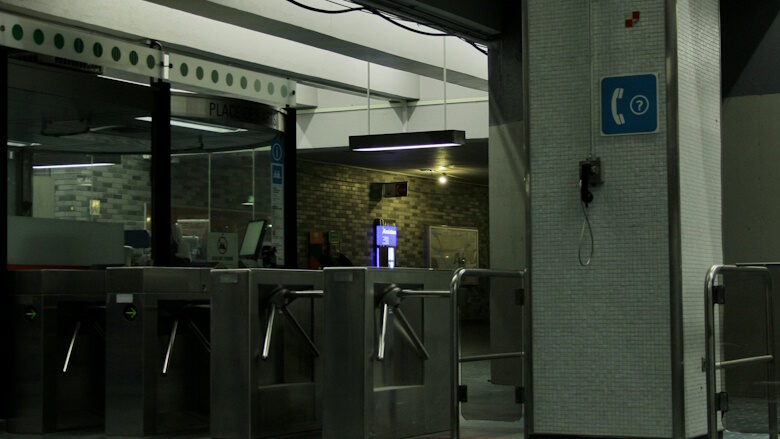
In today’s world, ensuring the safety of public spaces is no longer optional — it’s a responsibility. Concealed Weapons Detection Systems (CWDS) are crucial tools in this effort, but the market is flooded with options, each claiming to be the fastest and most effective. Decision-makers must grapple with the fundamental trade-offs between speed and security, often making the difficult choice of which aspect to prioritize for their unique environment.
As administrators navigate these decisions, they face the sobering reality of growing concerns from parents and teachers about campus safety, particularly the threat of gun violence. Data from Everytown for Gun Safety reveals an increase in gun-related incidents on school campuses across the United States. During the 2022-2023 academic year alone, there were at least 144 incidents of gunfire on school grounds — a 31% increase from the previous year — resulting in 36 fatalities and 87 injuries. The increase in gun violence in schools underscores the critical need for advanced weapons detection systems that not only work quickly but are also highly reliable in identifying concealed mass-casualty weapons.
Selecting a weapons detection system requires aligning the system’s capabilities with the specific demands and vulnerabilities of the organization. Such decisions require not only a thorough understanding of the technology but also an honest assessment of the risks an organization is willing to accept. Making the wrong choice — whether due to underestimating threats or prioritizing convenience — has consequences.
The speed trap:
Many weapons detection system manufacturers boast impressive throughput rates, claiming to screen thousands of people per hour without compromising security. However, these claims often rely on a critical compromise: ignoring smaller types of potential metallic threat items.
For instance, systems designed to allow mobile phones and keys to pass through unimpeded inevitably create vulnerabilities for smaller threats. While this speeds up the screening process it also opens the door for smaller weapons like knives or even sub-compact firearms, to slip through undetected.
The truth is there is a trade-off between the speed of screening and the depth of security screening. High-throughput systems designed to screen large crowds quickly may compromise on detecting less common or harder-to-identify threats. Striking the right balance is a critical decision, especially for sites like schools and hospitals.
The AI x-ray factor:
AI X-ray systems offer a higher level of security as they provide a visual representation of the contents of bags and belongings and can be configured to detect both ferrous and non-ferrous metals. This is crucial because some weapons, like certain knives and even 3D-printed guns, aren’t made of steel (ferrous metal).
With AI-enabled X-ray technology, objects are identified and labeled, distinguishing harmless items from potential threats. When a risk is detected, officers are alerted in real-time, allowing for swift and precise intervention. This capability not only streamlines the screening process but helps to identify objects that would go undetected via standard metal detectors.
In a campus setting, a combined CWDS/X-ray system can be seamlessly integrated into entry points (even in small spaces) providing a robust layer of security. Utilizing two X-ray scanners alongside a walk-through metal can help maintain a steady flow. And with continuous learning capabilities, AI-powered X-ray systems adapt to emerging threats, offering a dynamic and ever-improving security solution. Implementing a dual approach can help maintain a steady flow of individuals while ensuring thorough screening and can address the needs of many high-traffic environments.
Finding the right balance:
The ideal CWDS solution depends on the specific needs and priorities of an organization. Factors to consider include:
Traffic volume: How many people need to be screened per hour?
Sites with high traffic need to screen thousands of people per hour without causing bottlenecks or significant delays. A smaller facility with low foot traffic may be willing to deploy a slower system. Whether an organization needs a high-throughput system to avoid long wait times or one with advanced threat-detection capabilities for maximum security, the choice must align with operational goals and resources.
Security level: What level of risk is acceptable?
In reality, different environments have varying levels of acceptable risk. A high-security facility, like a government building or nuclear plant, may require a system that can detect even the smallest threats, with virtually zero tolerance for error. On the other hand, a retail store or entertainment venue may be willing to accept slightly lower sensitivity to ensure smoother customer experiences. An organization must choose.
Budget: What is the financial investment security leaders areable and willing to make?
Cost is an important consideration, as WDS solutions can range significantly. Factors such as installation, maintenance, and potential upgrades should also be factored into the budget. Clearly defining the budget ensures that security leaders select a solution that meets their needs without exceeding financial limits.
Space constraints: How much physical space is available for the system?
Available physical space greatly influences the choice of a CWDS. Compact systems are ideal for facilities with limited space, such as small office buildings or storefronts, where every square foot counts. Space constraints also dictate the layout and positioning of the system, as well as considerations like how it integrates into existing entryways or checkpoints. Ensuring the system fits seamlessly into the environment is essential for effective deployment.
Key takeaways:
- AI X-ray speeds up property search
- AI X-ray systems offer enhanced security scanning for broad range of prohibited items
- Dual AI X-ray and walk-through systems can optimize both speed and security.
No weapons detection system can guarantee that 100% of threats will be detected, but by carefully considering these key factors and understanding the limitations of different technologies, an organization can make an informed decision about concealed weapons detection systems and effectively balance their security needs with operational efficiency.
This article originally ran in Security, a twice-monthly eNewsletter. Subscribe to never miss out on future content.



